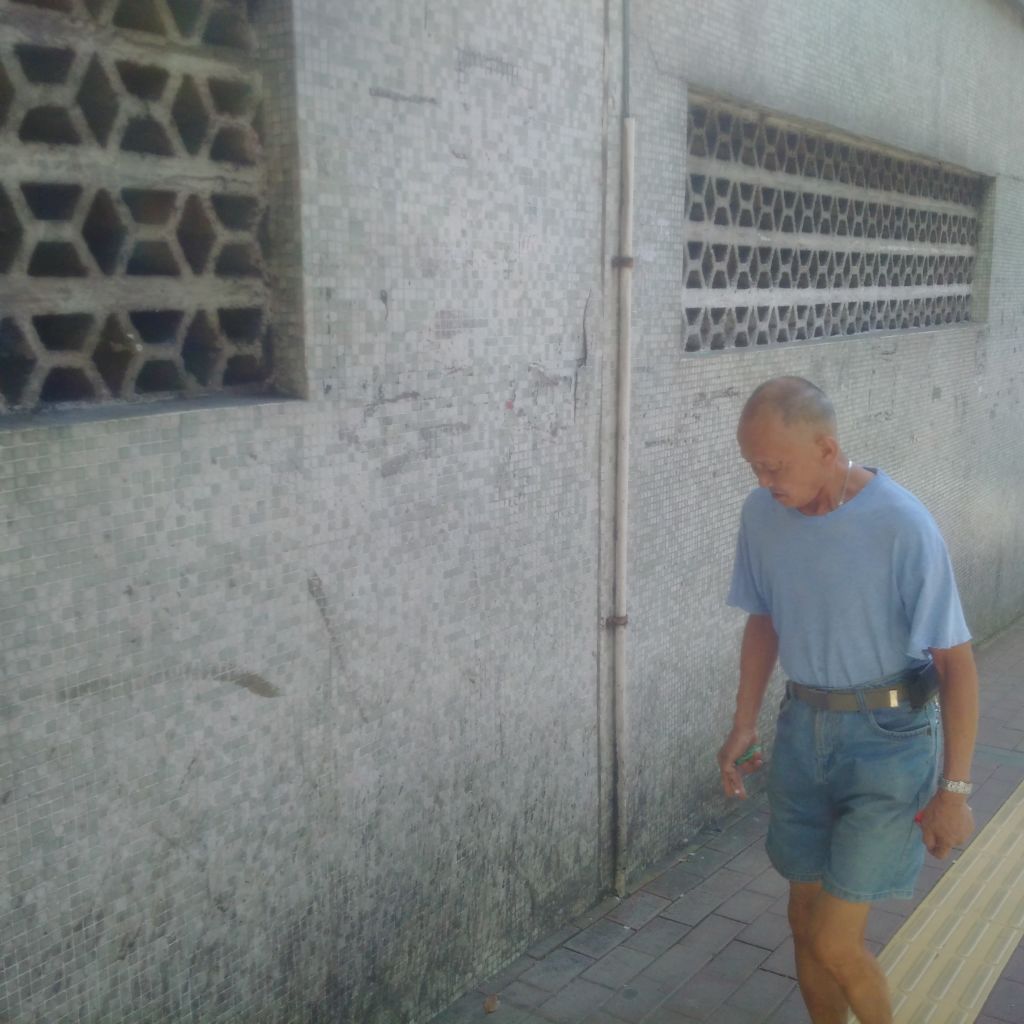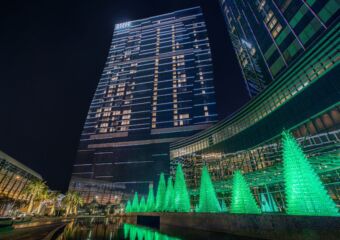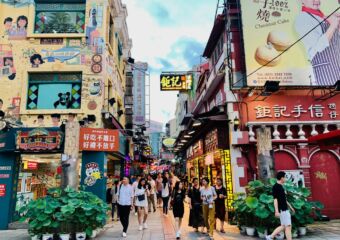The Border District is another area of Macau that receives little attention from tourists, but is nonetheless worth a visit. Like other districts in Our Lady of Fatima parish, the Border District has little of the photo-ready old architecture of the historic center, nor does it have much in the way of hot new attractions like those offered by the hotel-casino resorts in Cotai.
In a way, it’s ironic, because the Zhuhai-Macau border sees a fantastic number of crossings per day. In an approximately one month period up to this writing, over 400,000 crossings were officially recorded. During peak periods such as Chinese New Year, crossings can swell into the millions over a three day period, or several times the total population of Macau. So the volume of foot traffic around the border is incredible. Yet, a large number of these visitors don’t stick around the immediate area but instead take taxis, public buses, or casino shuttle buses and travel right through the parish and on to the city center, or beyond to Taipa, Cotai, or Coloane.
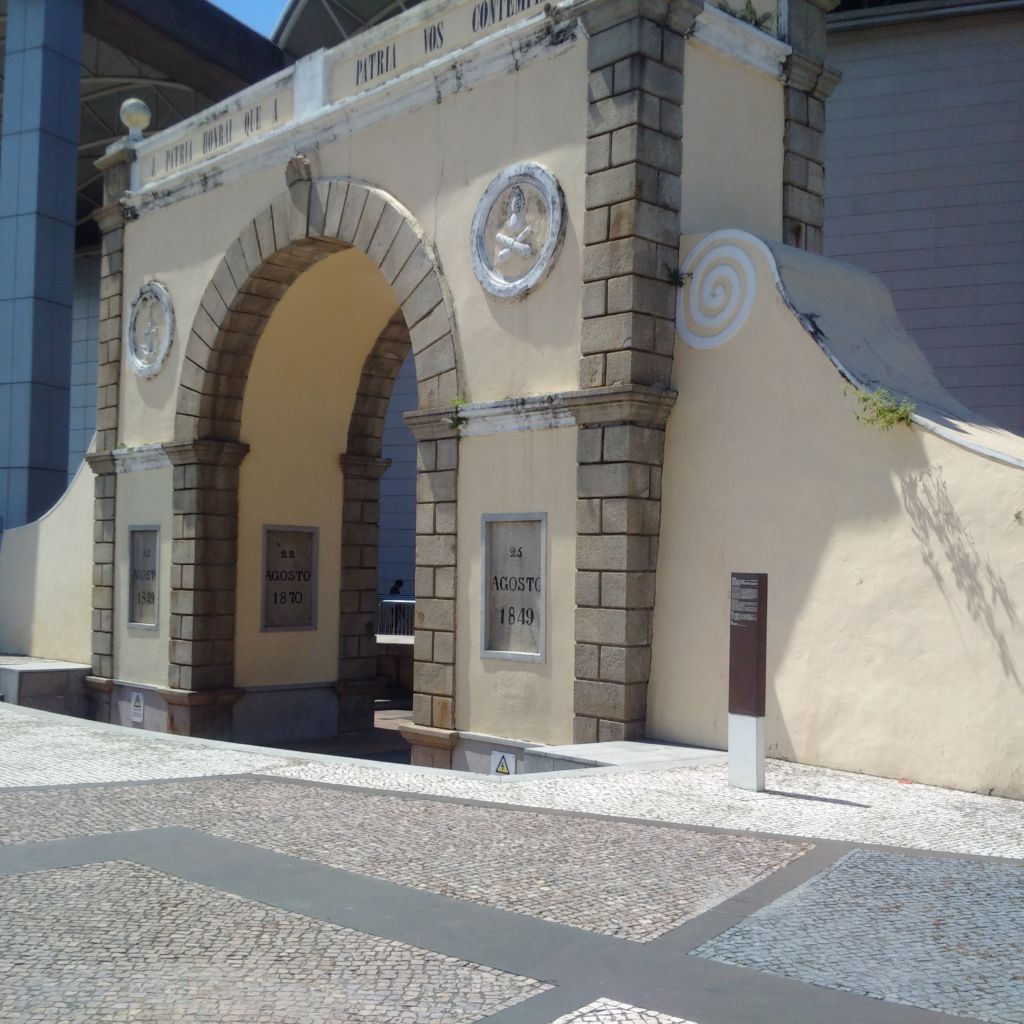
So why visit? Unlike Fai Chi Kei, the Border District isn’t really that laid back. While Fai Chi Kei is relatively quiet during the day, as a bedroom community serving other regions of Macau, the Border District bustles with commercial activity. It’s a major point for shipping goods across the border. The residential high rises common in other parts of Macau are here, too, but interspersed among them are small warehouse and storage facilities and even some old factories.
None of this is likely to appeal to the average casual tourist, but one thing that strikes us is just how unchanged this area is, compared to other parts of Macau and even compared to Zhuhai across the border. Our first time in the Border District was around fifteen years ago, and while a few small shops have come and gone, the present-day landscape remains nearly identical to that of the past. Very little in the way of new buildings; same roads…it is as if time has stood still in this part of Macau and it is still the 1960s–1970s. Meanwhile, the rest of Macau has changed considerably, at the risk of making the understatement of the year, and across the border, Zhuhai continues to develop.

So for those interested in seeing a certain dimension of Macau, an everyday working district untouched by the “New Macau”, this is the place to go.
The northern boundary of the district is, of course, the border gate. The road running from the border south, right down the center of the district, is Istmo Ferreira do Amaral, and it is interesting that this road is aligned with a road that begins on the other side of the border, Yingbin Avenue, that runs from the border north through downtown Zhuhai, and passes through Banzhang Mountain. So it is a nice bit of feng shui that this road is met on both ends by mountain-hills: Mong Ha Park to the south in Macau and Banzhang Mountain to the north in mainland China.

The landmark signaling the southern boundary of the Border District, and indeed, the landmark which is probably the most famous of the district is the Triangle Park, at which Istmo Ferreira do Amaral terminates. This park alone is worth the visit, a small triangle squeezed between three roads yet still peaceful and an enjoyable place to relax. The park is popular with retired locals, and seasoned musicians among them gather in the afternoon at the center gazebo to play folk songs and other selections from Cantonese opera. Along the southern edge of the park, men gather to play Chinese chess and dissect each other’s games. Incidentally, if you are in need of refreshment, there is a great crepes shop just across the street from the park on its eastern side. Diamond has nice sweet and savory crepes, handmade sodas, and coffee. Grab something and enjoy it in the park while you are listening to music!
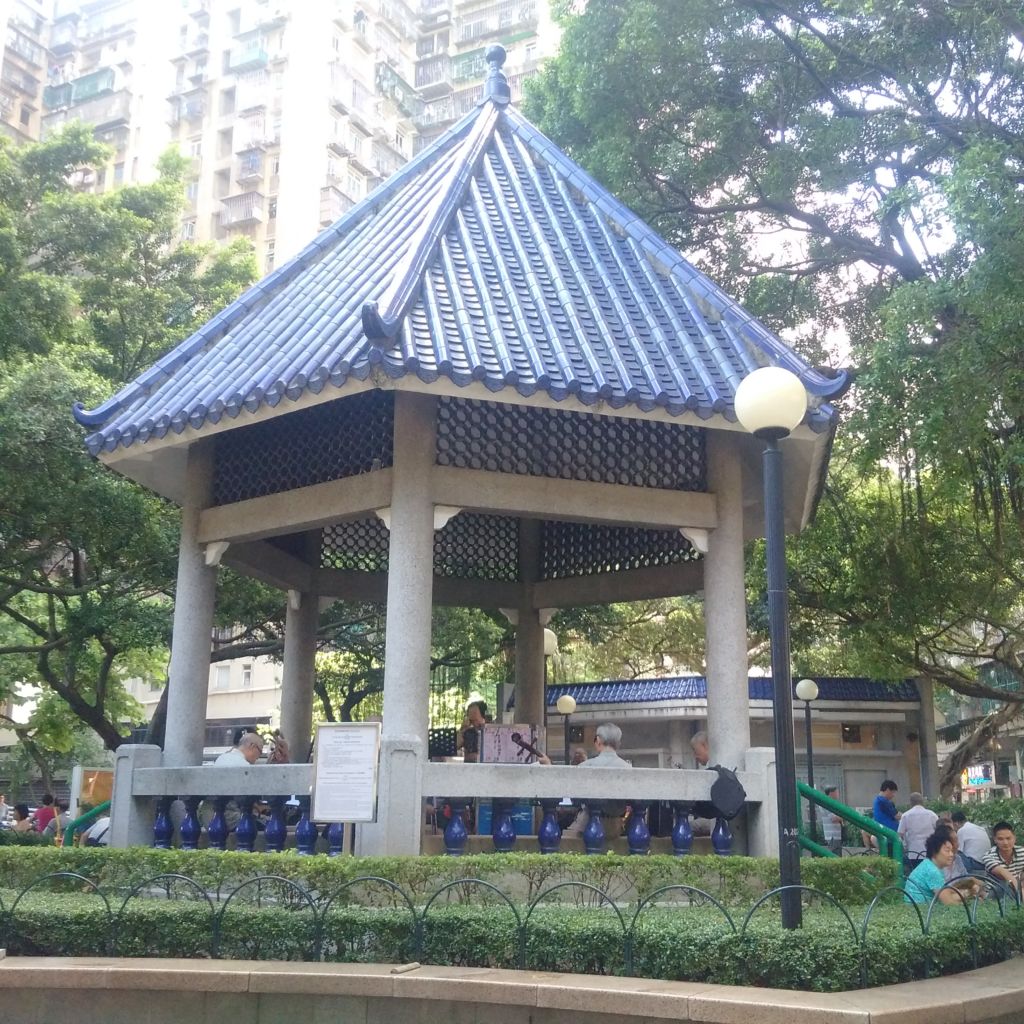
The western boundary of the district is a block over from the Triangle Park, Avenida Artur Tamagnini Barbosa, the road running north-south which the Border District shares with its next-door neighbor, the Toisan District. The landmark here would be the Lin Fung Temple, which actually is just inside the Mong Ha District to the south. The eastern boundary of the Border District is noted on maps as being as far east as Avenida Leste do Hippodromo, although signs in the district seem to indicate a smaller area. A landmark on the eastern side of the district would be the Iao Hon Market. If you walk east about three blocks from Triangle Park, you will eventually hit Avenida Longevidad. Turn north onto this street and walk one block. The market is here.
If you look at really old maps of Macau, you will notice that the Border District area is present, while on either side there is more water visible–areas like Fai Chi Kei in the west and Area Preta in the east didn’t exist back then. It was heavy silting which caused these areas to gradually fill up, and, with human intervention, eventually become reclaimed land.
So we find it comforting that this border area, while otherwise not terribly exciting, has existed for so long. It really does maintain a link back into the past, long after other areas of Macau have undergone a radical transformation. Not only that, it has been an enduring link between Macau and mainland China for hundreds of years.

